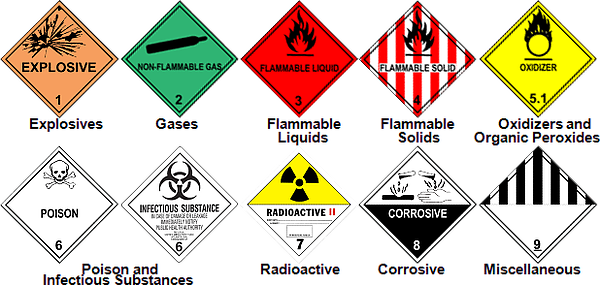
The term “hazardous materials” is applied to all substances and objects whose transport may represent a potential threat to the environment, humans, animals and public safety and order. The transportation of hazardous materials is therefore subject to various legal regulations depending on the mode of transport. Ensuring they are transported safely requires a company to be licensed in dangerous goods handling, assessment, and transport under the Australian Dangerous Goods Code (ADG7).
ASP Global are fully certified on the movement of dangerous goods via air and sea.

The transportation of dangerous goods is controlled and governed by a variety of different regulatory regimes, operating at both the national and international levels. Prominent regulatory frameworks for the transportation of dangerous goods include the United Nations Recommendations on the Transport of Dangerous Goods, ICAO’s Technical Instructions, IATA’s Dangerous Goods Regulations and the IMO’s International Maritime Dangerous Goods Code. Collectively, these regulatory regimes mandate the means by which dangerous goods are to be handled, packaged, labeled and transported.
The regulations concerning classification for the relevant mode of transport determine whether a substance or object is a hazardous material. Differences are made between the following modes of transport:
certified and experienced staff will ensure that your shipment is classified, packed, documented and shipped in a fully compliant, professional and cost effective manner.
Classification of dangerous goods is broken down into nine classes according to the type of dangerous materials or items present.
The multitude of dangerous goods regimes across the world and the complexity of dangerous goods classifications and regulations can render compliance a particularly difficult task.
However, ASP Global is well placed to deliver tailored solutions to all customer’s dangerous goods needs. We are proficient in all nine classes of dangerous goods and provide a full range of services including packaging, packing, labeling and freight forwarding.
Packing of dangerous goods is of the utmost importance for shipments travelling by air and sea. ASP Global is able to arrange a full packing service using UN approved boxes and labels. We have a constant stock of UN approved fibreboard (4G) boxes and other special packaging, suitable to safely move hazardous goods as well as the necessary absorbent materials. We are also able to offer supply and packaging services for shipments requiring ‘Dry Ice’ to ensure temperature sensitive goods remain frozen on their route to the consignee.
Documentation is a priority for all dangerous goods shipments and at ASP Global we have staff that are trained to IATA (International Air Transport Association) and IMO (International Maritime Organization) standards that are able to provide a full documentation service.
The “Dangerous Goods Note” is a legal requirement for the transport of dangerous goods by air and sea. The person responsible for signing the “Dangerous Goods Note” is required by law to have had the appropriate training. Our staff are always up to date with training requirements and they have full access to all relevant publications regarding the transport of dangerous goods.
Forwarding of dangerous goods could not be easier with ASP Global. With a good relationship with the world’s major airlines and shipping lines we are able to secure priority space for dangerous goods shipments.
ASP Global has highly trained licensed staff to ensure that the acceptance, loading and handling of dangerous goods complies with established international regulations. This high level of expertise ensures that we never put our cargo, passengers, crew and the environment at risk.
The following are some common items classified as dangerous goods.
For comprehensive details on the classification of dangerous goods, and any restrictions, please refer to IATA Dangerous Goods Regulations.
Please contact us for further information on transportation of your dangerous goods.